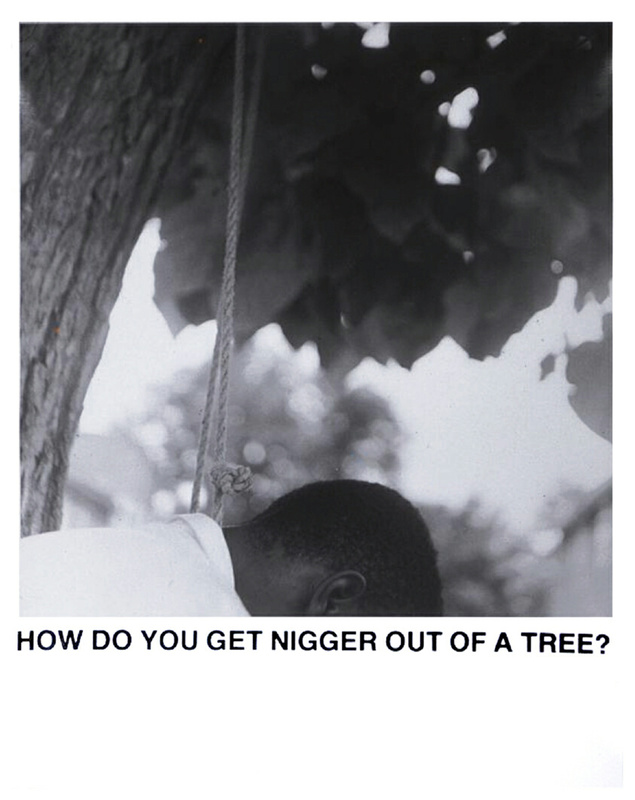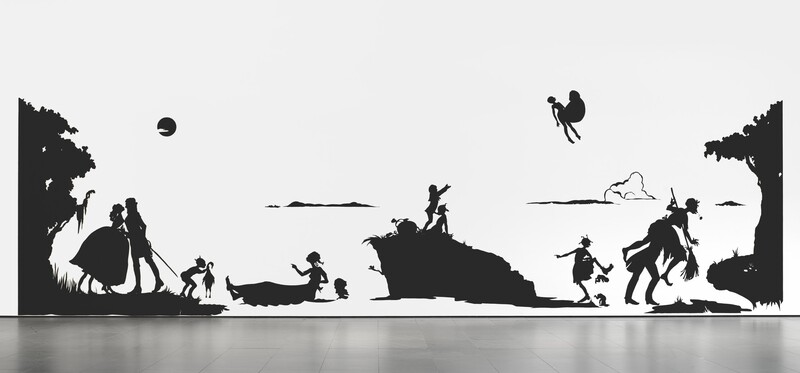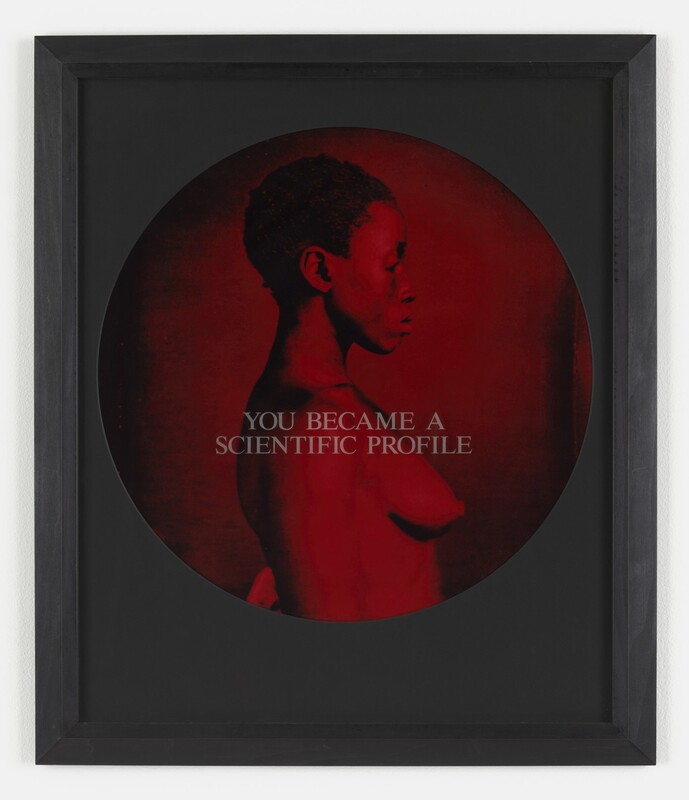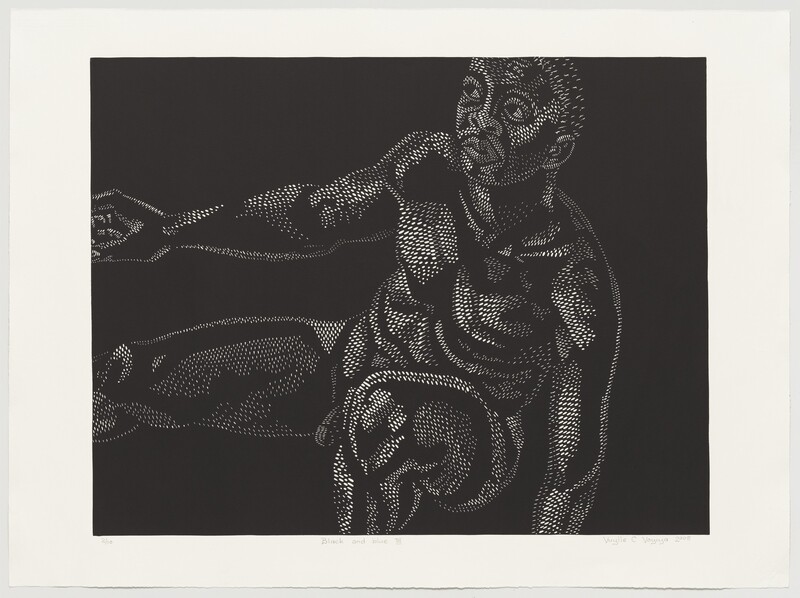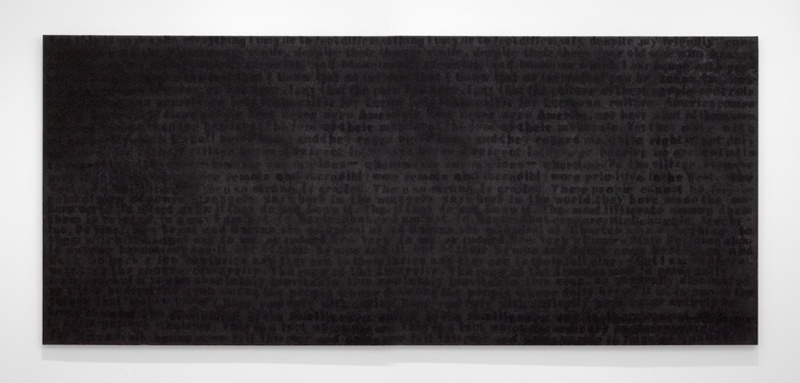Devils Dancing In His Eyes
“Slavery is not African history. Slavery interrupted African history.” - Mutabaruka
The united states has a long and complicated history with black people, as evident from the 400 years of slavery, the era of Jim Crow, and decades of institutional racism. The emotional effects of slavery exist even now. The era of Jim Crow Laws, which were state and local laws that legalized racial segregation after the Civil War. The items from this section will be exploring that emotion, not a specific era of time. Floyd Coleman discusses in his journal, African American Art Then and Now: Some Personal Reflections, the importance of recording and studying African American art (p. 24). In studying African American art we have to look at the good and the bad, and the bad is where we will be starting. In nearly all of these works you see different depictions of violence and struggle. Our first look at this depiction of violence will come from Carrie Mae Weems and her work How Do You Get a Nigger Out of a Tree? 1987 C.E. created by Carrie Mae Weems (1953 - ). Carrie Mae Weems is a 68 year old black artist and in this week she is exploring the racist ideologies that were about the inferiority of Black people. In Carrie Mae Weems work, How Do You Get a Nigger Out of a Tree?, we see a depiction of lynching. If you are unfamiliar with that term it is to put someone to death by hanging. The US has a long history of lynching black men in particular, with possibly a more recognizable person to unfortunately be murdered in this way being Emmit Till. Carrie Weems' work is a reflection of this act of violence against black people.
We see even more explicit acts of violence with Kara Walker’s work, Gone: An Historical Romance of a Civil War as It Occurred b'tween the Dusky Thighs of One Young Negress and Her Heart 1994 C.E. created by Kara Walker (1969 - ). Kara Walker is a painter, printmaker, installation artist, and a filmmaker. She is very well known for her work with topics such as race, gender, violence, and identity. All of this goes along with her famous silhouette cutout style which appears in many of her works and is present in the work we are looking at here. A common theme with these works is black people not being treated as full humans. In Kara Walker’s work they are seen as something to use for sexual pleasure or something to take violence out on, similar to Carrie Weems’ work. The theme of being treated as less than is very prevalent because that is the treatment black people faced majorly in the past as well as in present times.
We see this again with Carrie Weems’, You Became a Scientific Profile 1995 C.E., and how white people fundamentally didn’t see black people to be humans on a genetic level. Carrie Weems has taken actual photographs of enslaved people and added a border as well as text to give some sort of voice back to people that had none. Black people being the subject of many different tests and for years beliefs of black people being genetically stronger or unable to feel pain being believed by the masses, including doctors. The naked female body in this work is also significant to the vulnerability in the piece and the vulnerability black people feel in a systemically racist nation. Lisa Ferrington discusses in her journal, Reinventing Herself: The Black Female Nude, how typically a naked white woman would be depicted in a desirable way with an “invitation to voyeurism” (p. 15). What stands out with Carrie Weems’ depiction of the nude black woman is there is no sense of desire or empowerment in the work, that isn’t the point. The woman looks tired and defeated, the image itself looks almost sterile fitting into the theme of scientific testing.
Since we looked at the nude black female, we will also take a look at the nude black male. This work was made by Vuyile Voyiya (1961 - ), a South African contemporary artist. This work is one in a series that works to show racial violence against black people, and is called Black and Blue III 2005 C.E. This topic was something Vuyile explored a lot during the 80s. The type of violence we are talking about includes: lynching, police brutality, and hate crimes all done against black people. In Black and Blue III we see nudity in the form of violence. The man is cowering to the side with one arm up and out. It is as though he is trying to back away from some form of violence. The act of him being naked and in a crouched position shows the vulnerability and inability to fight back in the situation. In both examples of the nude black person there is a theme of a loss of power and ability to fight back.
Defeat, isolation, and violence are repeated emotions one will see when looking at works exploring discussing the struggles of slavery and racism. Stranger in the Village #13 shows the raw emotion of that isolation. Stranger in the Village #13 was created by Glenn Ligon (1960 - ) in 1998, and he focused his work on race, language, sexuality, and identities. Stranger in the Village is actually a rendering of text from James Baldwin, about his experiences being African American in a remote town in Switzerland. We observe from Glenns work isolation due to race and nationality but the black text on a black background also shows us how difficult it can be to fully express those feelings with just language. As we transition into works that show development and change, that feeling of isolation lingers even in attempts at change.
As we move on we are looking at works that also convey darker themes but also show a state of reflection within them. In this next section we are seeing newly freed enslaved people start a transition into their lives.
